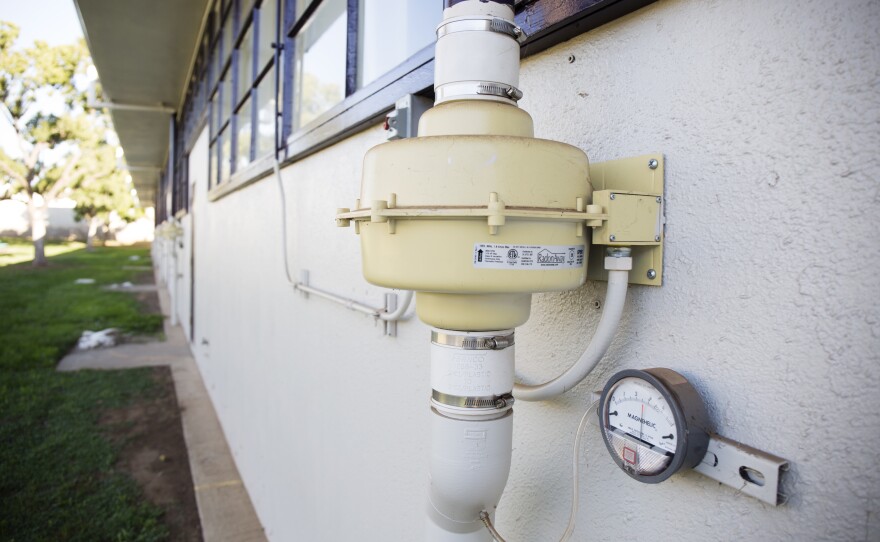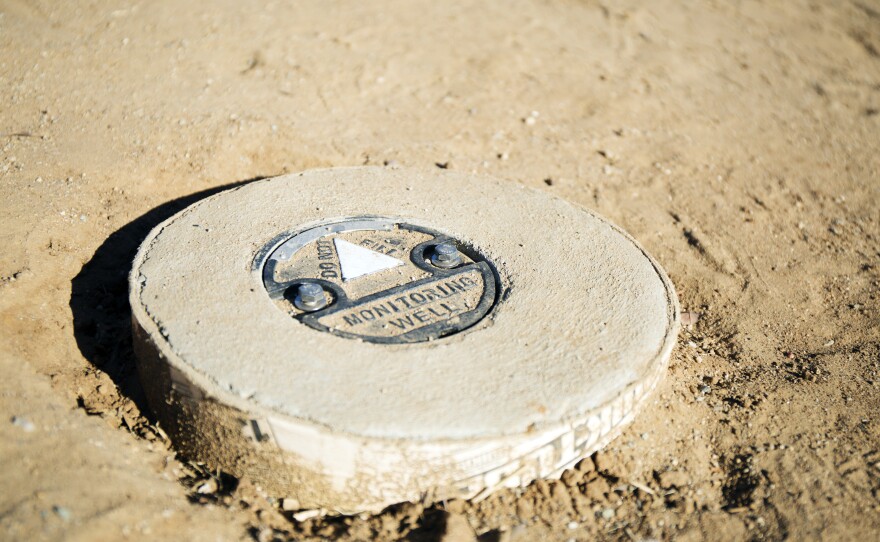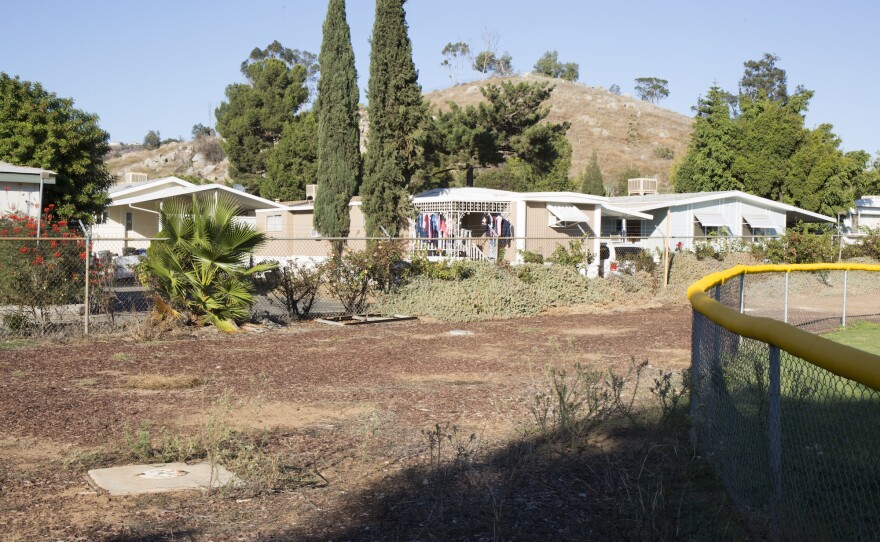State and county officials have long had a map that shows an underground plume of the toxic chemical trichloroethylene (TCE) stretching from a former aerospace firm in El Cajon for more than a mile toward the county airport, Gillespie Field.
An area of high concentration runs beneath a K-5 school, Magnolia Elementary. But the map also shows the plume flows beneath manufactured homes in a mobile home park adjacent to the school. No action and little testing have taken place there — until now.
The California Department of Toxic Substances Control issued a notification Oct. 6 after a contractor tested soil there and found TCE levels that left no doubt further testing should be done.
“We collected data near the mobile homes along the property boundary, and concentrations were detected at 5 feet below ground surface that are at level that may result in what we consider a significant risk to residents,” said Shahir Haddad, a supervising engineer for DTSC.
San Diego environment attorney John Fiske calls the contamination one of the largest, most concentrated and shallowest groundwater plumes in California.
Last year, Magnolia Elementary closed temporarily and students went elsewhere while contractors installed piping under each classroom to remove the vapor. Now, with the students back, the new pipes are visible along the outside walls. They pass through filters and vent over the roofs.

In the new testing near the mobile homes, one probe measured 560 micrograms of TCE per liter of soil gas. Soil gas is the air in spaces between soil particles. It can be extracted and analyzed. For comparison, the California Office of Environmental Health Hazard Assessment, the state’s environmental health science agency, shows a screening level on its website of .53 micrograms TCE per liter of soil gas. A screening level is the line above which more testing is warranted. The highest sample then was more than 1,000 times the screening level.
Haddad says now the air in the mobile homes should be tested.
In the 1960s, a company called Ametek, Inc. took over operation of an aerospace manufacturing firm on Greenfield Avenue in El Cajon. It used a hole in the ground 10 feet deep and 12 feet in diameter, lined with redwood planks and a concrete floor, to dispose of acids and solvents. The practice continued into the 1980s, according to documents from the San Diego Regional Water Quality Control Board, which fought to get the plume delineated and addressed for years.
Ametek legal documents refer to the sump as a collection tank. Whatever its name, the solvents flowed into the soil, into groundwater and traveled downslope. The plume is less concentrated at its edges and more potent toward its center.
The tank was closed and 200 cubic yards of contaminated soil removed in 1988, according to company filings. Ametek as a business split at that time and liability for the environmental legacy was assigned to a new public firm, Ketema, which is Ametek spelled backward.
When that company went bankrupt in 2007, Ametek “stepped in to take responsibility for environmental monitoring and activities,” Thomas Deeney, vice president for corporate compliance, said in a written statement.
Ametek has paid for the ventilation system at Magnolia Elementary and also pays for continued monitoring at the school. It was an Ametek contractor that collected the most recent samples near the mobile park, leading to the notification.
TCE is a carcinogen and developmental and reproductive toxicant, if people are exposed to enough of it over time.
“Developmentally you have hazard of miscarriages and decreased birth weight of children,” said John Budroe, senior toxicologist with the state environmental health agency.
With respect to cancer, “There is strong evidence you can increase kidney cancer in people and some evidence of liver cancer and malignant lymphoma, which is a blood cancer.”
Budro adds that TCE can lower reproductive hormone levels in men, reduce sex drive and reduce sperm quality.
The substance doesn’t necessarily stay in the soil or water. It can evaporate out of liquid form and migrate through cracks in a concrete slab and into a home or other building.

Several people at the mobile park said they’ve not been told that the plume runs under their homes. Most did not want to give their names. Jean Janke, a resident who cares for her disabled son, said seeing the work taking place at the school left an impression on her.
“I thought, ‘well that is pretty close.’ If there is something wrong there, I would automatically think it would be here too,” Janke said.
Her home is a straight shot of approximately 800 feet from the probable site of the former disposal hole, based on a map of well monitoring results.
Thomas Deeney, the Ametek vice president, said in his statement the company will carry out testing in the crawl spaces and inside homes in the mobile park if it obtains such permission. The Proposition 65 warning from Department of Toxic Substances Control, he said, was made “in an abundance of caution, not because hazardous levels of any chemicals had been found in the indoor air of an existing, occupied structures.”
Residents at the mobile park will be told of the testing results. The county water board is arranging a location and time, the agency’s Sean McClain said in an email.
The DTSC official who issued the notice sought to assure residents. “If we see any concentration indoors, we will act on it,” Haddad said.






